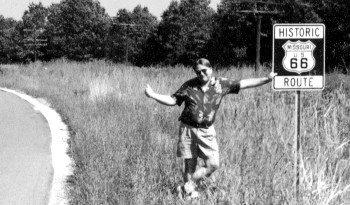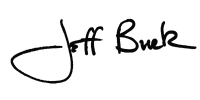| | | |||
 | ||||
|
As soon as that crisis passed, it seemed that a lot of folks in the racing community went on to the next apocalyptic event — NHRA’s 90% nitro rule — which (judging from the mail here at DRO) would signal the end of fuel racing as we know it. Well guess what? Just as the sheep were wrong about the Y2K doomsday scenario, they were also wrong about the 90% nitro rule. The major fuel teams have just completed pre-season testing at Phoenix and Tucson and the results proved once again that racers are generally smarter than the guys who make the rules. At Phoenix, on Charlie Allen’s notoriously slick, pre-national event, unprepared track, the Top Fuel cars recorded sixty-foot times in the 80’s and elapsed times in the 4.70 range. The Fuel Coupes ran 300 mph, four-second laps. In the high desert of Tucson where the altitude is over 3000 ft Gary Scelzi ran laps in the 4.60’s at over 320 mph in a Top Fueler and John Force’s Fuel Coupe ran a 4.89 at over 312. While these aren’t stellar times, they do prove three things: (1) The uproar over the 90% rule was totally uncalled for, (2) Successful racers and tuners will always find a way to compensate for rule changes, and (3) If any racing sanctioning body really wants to slow down cars, the sure way to do it is with weight and tire rules; anything else is just a stop gap measure, as history has proven over and over. Which brings me to the subject that I really want to talk about: Racers. With all of the political crap that pervades the sport of drag racing from both management and racers, it is sometimes easy to forget why so many of us really love this sport. Thank God that every once in a while an event occurs that reminds us what drag racing is about and why we like it. Just such an event happened in late December of 1999 and it was so good I thought I would share it with, to quote WKRP’s Dr Johnny Fever, "my fellow babies." This little drama occurred during a pre-season test session for IHRA Pro Stockers at Darlington Dragway. The main players were dedicated Ford Pro Stock racer Chris Holbrook and equally dedicated Chevy Pro Stock racer John Montecalvo. First, let’s set the scene. During the 1999 season these two IHRA racers had dueled constantly to see who was the quickest Pro Stock car in the world. In qualifying during the ten-race season Montecalvo’s Lumina qualified number one four times and Holbrook qualified the Stu Evans Probe number one five times and won the IHRA World Championship. There is a fierce but friendly rivalry between the two racers, which includes the race to be the first car to run a lap in the 6.50 range. It is also a battle of engine builders; Sonny Leonard builds the 800-inch Chevys for Montecalvo while Jon Kaase builds the Ford mountain motors for the Stu Evans team. Now, fast forward to Darlington and the test session. The air is excellent as it often is at Darlington (which was the track where Bill Kuhlmann recorded the first 200 mph doorslammer pass) and the Stu Evans team is testing on a Wednesday. John Montecalvo has plans to test but is waiting for the weekend. Montecalvo gets a call at his East Coast office from someone at the track. "John, Holbrook is testing and looks like he is going to run a .50," the caller told him. "If you want to be the first to run in the 50s you better get down here!" "I called my guys, put the car in the box and we headed to Darlington a day earlier than we planned," Montecalvo said. "When we got to the track we saw the Stu Evans Probe on the track and I was afraid that he had already run the number." Holbrook hadn’t, so Montecalvo and his crew kicked the Monte Carlo out of the box and started getting it ready to run. "The air kept getting better and the track was good. We knew that the conditions were right to run a .50," Montecalvo said. "We got our car ready and went to the line. Unfortunately, Holbrook and his crew got there first. I was sitting in the cockpit in the staging lanes watching them ( Holbrook’s crew) work on the car and adjust tire pressure. We were ready to run so my crew motioned me to drive around them and stage. I decided that wasn’t cool, that I would just wait for my turn. I watched Holbrook launch. The car left hard and since he had already run a 6.62 I thought ‘This is it ,he’ll run a .50 on this lap,’ but something happened to the car—the wheelie bars broke I think—and he had to lift." It was Montecalvo’s turn. He staged the Monte and hit the pedal. "The car left hard and it felt like it was on a good run. At about 900 feet it started to miss just a little but I kept my foot in it and ran it out the backdoor just in case." A 6.599 came up on the board and Montecalvo got the first .50. After the day was over, the Montecalvo team, and the Evans team went to dinner together to celebrate the first Pro Stock pass in the 6.50s. There were no fans, no television cameras, no points or money at stake, just a couple of drag racers running their hot rods against each other to see who had the best car that day. That is the essence of what drag racing is about and what originally attracted racers and spectators to the sport. It’s just too bad that the hype, egos, and money associated with professional drag racing sometimes overshadow the sport itself and we forget why we started doing this in the first place. Thanks to John Montecalvo and Chris Holbrook for reminding me.
photo by Kay Burk
| ||||
|
Copyright 1999-2001, Drag Racing Online and Racing Net Source | ||||
 Well, despite all of the pre-millennium hype Mickey’s little hand rolled past the big hand at midnight on the first day of January, year 2000 without the world coming to an end. In fact, the only casualty of the New Year was my head. I had a massive headache the next day resulting from consuming the booze I had stockpiled just in case the doomsayers were right. By the way —anybody want to buy a pallet of Spam, and a bunch of little purple velvet bags?
Well, despite all of the pre-millennium hype Mickey’s little hand rolled past the big hand at midnight on the first day of January, year 2000 without the world coming to an end. In fact, the only casualty of the New Year was my head. I had a massive headache the next day resulting from consuming the booze I had stockpiled just in case the doomsayers were right. By the way —anybody want to buy a pallet of Spam, and a bunch of little purple velvet bags?